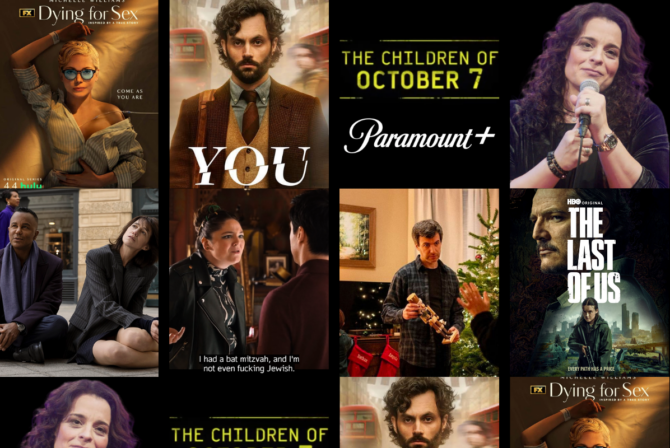This morning I watched proudly as my 19-year-old daughter signed the credit card receipt for her haircut. It might sound strange to hear that paying for her own beauty regimen is noteworthy, but you see, she wasn’t even supposed to live this long.
My husband and I were your typical, idealistic, young modern Orthodox couple and couldn’t wait to start a family. On a Friday night in March, our dreams to start a family came true. Our beautiful daughter Simi was born at 11:30 p.m., and we were in heaven.
Unfortunately, real life intruded in the middle of the night when the medical team said, “Your baby isn’t breathing right, could you sign this so we can give her a spinal tap?” We hesitantly replied “Um, OK, sure.” They came back telling us, “Your baby has pneumonia.” After 14 days in the hospital treating what we thought was a fluke, we took our baby home and thought now the fairy tale would begin.
At Simi’s 2-month checkup, after weeks of sleepless nights filled with her cries, days filled with frustrations over feedings, and multiple calls and trips to the doctor’s office, the pediatrician said, “We’re going to do a test for a Jewish genetic disease called Familial Dysautonomia (FD). It’s so rare, we don’t think she has it, but we want to do a conclusive test.”
A savvy radiologist had looked twice at the chest X-rays showing pneumonia in the tiny lungs of our 2-month-old baby and noticed our Asheknazic Jewish last name. He suggested Simi be tested for this rare disease, “just to rule it out.” By the time all three doctors from our practice walked into the room the next day, we knew what they would say. They read statistics to us, including one that said 50% of patients with FD don’t live past the age of 18.
At that moment, as the doctors read us the manifestations of the disease such as diminished pain sensation, lack of taste buds, uneven gait and diminished balance, debilitating scoliosis, lack of overflow tears, and the body’s inability to regulate its own temperature or blood pressure (just to name a few), I watched our hopes and dreams for this child fly out the window. There went the beautiful June morning of her graduation from Harvard Medical School (come on, I’m a Jewish mother), the vision of her sitting behind the big desk in the Oval Office, of us walking her down the aisle. The future was not as certain as I once thought it would be. In fact, the future we were facing was completely unknown.
Luckily for us, the only doctor devoted to this disease in the United States worked a mere 100 blocks away from our home. At the Medical Center, Simi’s nurse sat with us and explained what would happen next. “She’s going to have surgery to place a feeding tube in her stomach,” she began. “Oh no, we’re not going to do that one,” I said. She just laughed.
Well, we placed our daughter’s life in this woman’s hands and never looked back. Simi is alive and thriving today because of that hole in her stomach and the years of her life Dr. Axelrod devoted to this disease.
Two weeks passed and we took our daughter home to begin a life filled with therapies and doctor’s appointments. Within a span of 12 years, she has endured 14 surgeries, including five orthopedic surgeries to correct her scoliosis. Back braces, leg braces, and even braces on her teeth (OK, those weren’t so bad), drug trials, eye drops every few hours, special education classes, fights with insurance companies, fights with school districts, legal battles, and endless therapies became a normal part of our lives.
We were tired. We were sad. But mostly, we were confused. What happened to the dream of the perfectly pink baby and the happy family? Why and how did this happen to us? We were responsible and did everything right during the pregnancy. Heck, we did everything right even before! Both of us were tested for Tay-Sachs, just to be totally sure. FD took us completely by surprise. When Simi was born there was no test available for FD, as researchers were still working on finding the gene that causes it.
Nowadays, thank God, things are different. With the genetic mutations for FD and a large panel of other genetic diseases having been identified, carrier screening for a wide range of Jewish genetic diseases is now available. An organization called JScreen provides screening for FD and many other preventable diseases common in the Jewish population. With JScreen, it’s so easy that there is no excuse—the kit is mailed to your home and the testing is done on a saliva sample. I urge everyone to be proactive and get screened and spread the word to family and friends.
When Simi was 2.5, my husband and I decided to try for another child. At that time, the gene for FD had still not been located. As parents of a child with FD, we were able to have prenatal testing through chorionic villus sampling early in the pregnancy, comparing the baby’s DNA with Simi’s to ensure that it did not have FD. When Simi was 3.5 years old, we gave birth to her healthy baby brother, Zack.
Almost nine years later we repeated the process and had another healthy son. Most of the parents we know with FD children have gone on to have additional healthy children. It’s not as hopeless as many believe; in fact, there are more options now than ever. There is no reason every person of childbearing age shouldn’t have all the facts before they begin their families. Thanks to JScreen, genetic testing is simple, comprehensive and affordable. It’s painful to think of the suffering we could have avoided had we this option 20 years ago.
19 years later, there are constant medical breakthroughs, and though we believe that Simi’s life is better than we originally expected, it is far from perfect. Every single day brings challenges, and Simi continues to face them with strength and confidence. But I really wish she didn’t have to.
For information about genetic screening and to request educational materials or programming for your congregation, please visit JScreen.org or email info@jscreen.org.
Read More:
Kids Shouldn’t Be Doing Hours of Homework Every Night (Seriously)
5 Tips for an Awesome Bar/Bat Mitzvah–From a Teen Who’s Been There
After My Miscarriage, This Is How the Mikveh Helped Me Heal








